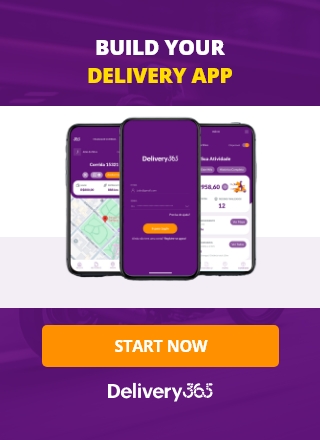Selling Price: How to Define a Pricing Strategy for E-Commerce
One question that most online store owners face is how to set the selling price of your products and services.
Understanding how to do this and establishing a pricing strategy is important for the growth of your business.

How to set the selling price of a product
In practical terms, defining the selling price of a product/service depends on the balance between the market price and the value of its costs and expenses.
This means that the established price must cover the cost of the merchandise, the retailer’s variable and fixed expenses and, in addition, must generate net profit.
To define the selling price of a product and/or service, the entrepreneur must consider two aspects: the marketing (external) and the financial (internal).
- Marketing: The selling price should be close to that of competitors. Factors such as brand awareness, time on the market, and sales volume also influence the product’s value.
- Financial: the selling price must cover the direct cost of the merchandise/service, variable expenses (e.g., sales commissions), and fixed expenses (rent, electricity, telephone, salaries, etc.). The remaining balance constitutes the net profit.
This calculation will give you the ideal selling price for your product. However, the market-driven price may be lower than the price established based on the company’s internal costs.
In this case, to make the business viable, the company must reduce its direct costs, fixed expenses, or accept a lower net profit.
Also, it’s no secret that competition can considerably affect the selling price of a product.
Large-scale e-commerce marketplaces have the advantage with their dynamic pricing that changes frequently, but there are other ways to compete.
It all starts with developing a pricing strategy that works for you and your business. Check out some tips for creating yours.
Know your costs
Knowing your costs is primarily to ensure that you don’t set a selling price that’s too low.
To do this calculation accurately, you need to evaluate all the expenses you will have with the product sold, from its manufacture, transportation, packaging, advertising, until the moment it reaches the hands of the end customer.
Some retailers believe that by lowering the price of their products at launch (and initially losing money) can boost purchases.
However, you need to be careful, because by standardizing the price, you may start to lose customers who are used to the lower price.
To decide if this is the right method for your business, you need to assess the average lifetime value of a customer and whether it will be worth the risk in the long run.
Perform price tests
It is also important to test your selling price regularly.
This means using tools like Google Analytics to run tests and find out which strategies generate the most conversions.
The A/B method is an easy way to evaluate the success or failure of your pricing strategy.
For example, ten people visiting your website might see a product at $49.99, while another ten see the same product at $39.99.
Note that the idea of A/B testing is not necessarily to see which price sells more (because that will invariably be the lowest-priced item), but the idea is to see which price generates the most profit.
You may sell 20% fewer items priced at R$49.99, but you could be making 100% more profit.
Business owners should be willing to change their prices if the evidence tells them to do so.
Ideally, all changes should be tested and validated using an analysis tool.
Offer incentives
To further improve your selling price strategy, consider offering incentives.
This could mean a temporary offer, such as a flash sale or a special date sale, for example, or an incentive like free delivery or a discount on your first purchase.
Using seasonal promotions and regular discounts can significantly increase your conversions in your online store.
Even if you can’t sustain a low price long-term, you can always offer lower prices for a limited time. For example, “Buy in the next hour and get 20% off!”
If you have a surplus of products, it’s a good idea to create a “2-for-1” offer. Plus, people perceive large percentages as significant savings. For example, “Buy one, get the second half price!” The customer sees the 50% discount, but in reality, they only receive a 25% discount.
Creating a smart offer and incentive policy for your company helps to attract customers and build a reputation for offering good deals.
– Strategies for using discount coupons in e-commerce
Diversify your catalog
Diversifying your product catalog to sell trending items helps increase your store’s overall revenue.
To vary the products sold, e-commerce owners must first understand market demand.
Use tools like Google Trends or Google Insight to check an item’s popularity.
Having a concrete idea of what your customers want gives you the opportunity to sell and generate profit with diversified products.
When in doubt, offer your customers multiple options to help them figure out what they really want.
In his talk “We Are in Control of Our Decisions,” Dan Ariely, a professor of behavioral economics at MIT, reports on an experiment he conducted to test the effects of product and price diversification.
Dan has found that giving a customer more options influences their choice and their perception of a “good deal.”
Specifically, an unattractive option may emphasize the benefit of other options, helping the consumer make a decision.
Get the price right and win the customer

Instead of focusing solely on driving more traffic to your website, make sure you’ve laid the foundation for success by optimizing your sales pricing strategy.
It should be a daily task – don’t just set prices when you add products to your site and then hope for the best.
Review your selling price continually to ensure that you are not missing out on all the profits you can.
Having a sustainable pricing strategy is essential for your e-commerce business to be successful in the long term.
After selling your product, don’t forget that it is crucial that it reaches the end customer quickly and safely.
All your efforts and credibility go down the drain if there is a problem with delivery and the goods arrive late or damaged.
Shipping is a fundamental part of any e-commerce operation and should be treated as a priority, so it’s important to find a delivery partner you can trust.
E-commerce platform, the app Delivery365 has all the technology your company needs.
With a focus on fast delivery, the app Delivery365 has its own system of online freight calculation, package tracking, and a database of hundreds of registered delivery people.
– How to calculate shipping for e-commerce
To offer the best option to your customers, visit our website, learn about our services, and ensure the safe transportation of your products and services.


